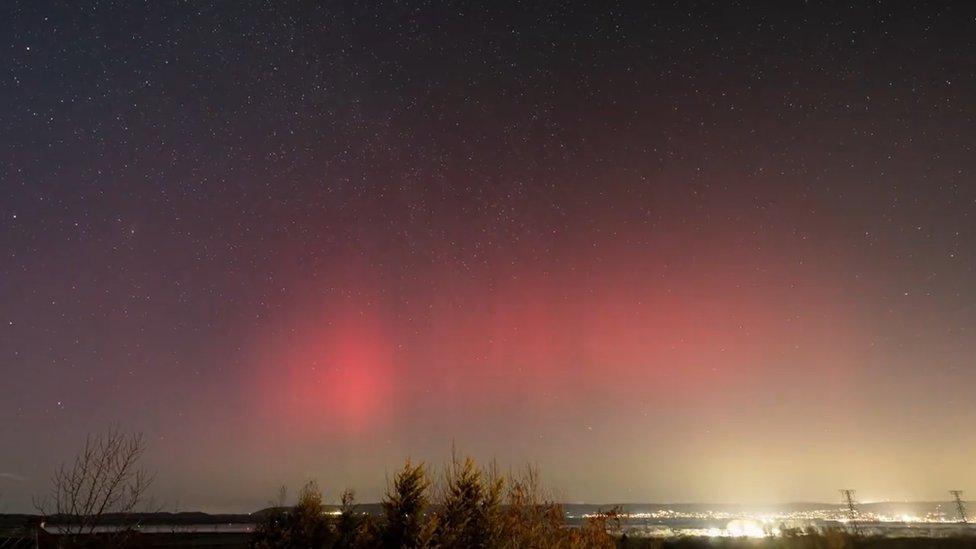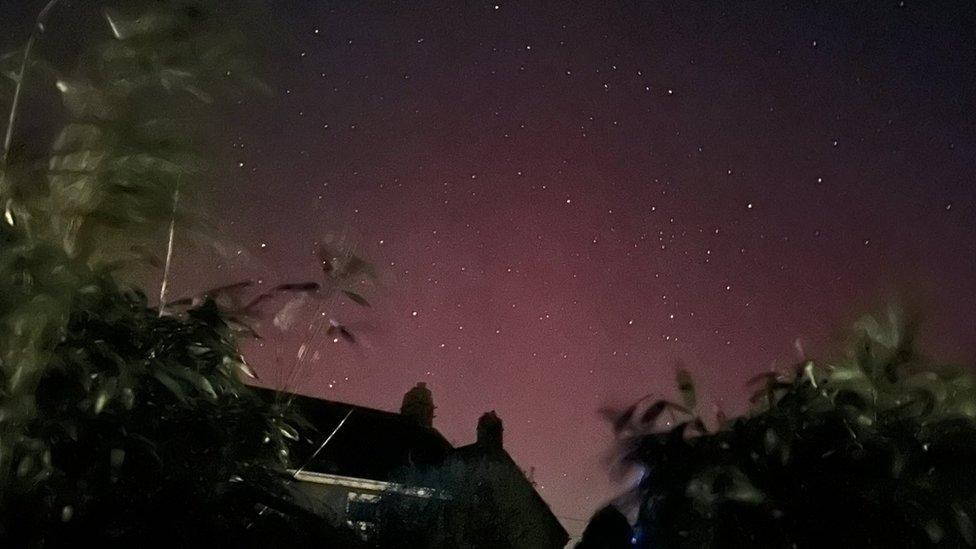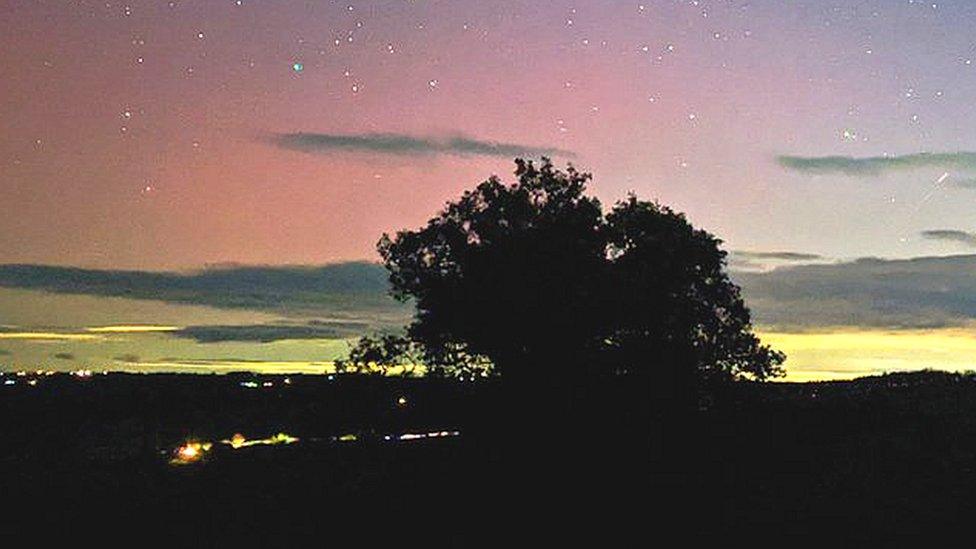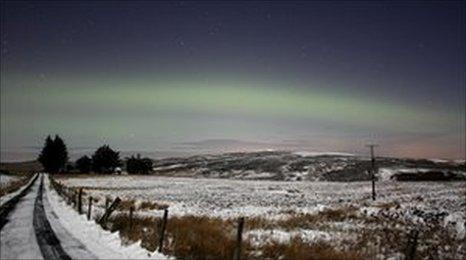Devon and Cornwall Northern Lights sightings
- Published

The Aurora Borealis were produced by a 'moderate geomagnetic storm'
The Northern Lights created a night-time spectacle as they rippled over Devon and Cornwall on Thursday.
The unmistakable hues of the Aurora Borealis were spotted by amateur astronomers across the region.
Photographer and artist Kerrie Ann Gardner said it was "staggering" to capture the "pillars of light" in East Devon.
The Met Office said a "moderate geomagnetic storm" had increased the chance of sightings.

Laurence Liddy captured time lapse footage in North Devon.
The natural light phenomenon occurs when particles from a solar flare interact with the Earth's magnetic field, creating the unusual effect.
Ms Gardner, from Tytherleigh in Devon, added: "I thought my eyes were playing tricks on me so took a photograph to check and sure enough there, right above our house, was the aurora."
She said it was something she "never expected to see this far south".
"It was staggering, and to top it off there were at least three bright meteors as well. It blew me away."
Laurence Liddy, of Barnstaple in North Devon, captured time-lapse footage of the event, usually seen in polar areas.
He took advantage of a "limited window" to "run out of the house" with his camera before setting up on a hill above Instow beach in Bideford.
He said: "I just waited for my eyes to adjust and could see a faint pinkish hue in the sky, it was very surreal.
"When I saw the amazing vivid colours captured by the camera it was amazing."

The lights were also spotted over Stithians near Redruth
There were also sightings in Cornwall, where Jo Shreeve lives with her seven-year-old daughter Ezmay in Stithians.
Ms Shreeve said: "I woke my daughter up at midnight to come and look, it was red and beautiful.
"We also went to Portreath beach, it was just amazing, a once-in-a-lifetime chance to see it down here.
"We've always talked about going to Iceland but now my daughter says 'I've seen it mummy'."

Ms Shreeve also headed to Porthreath beach to capture this shot
A Met Office spokesman said a geomagnetic storm "high up in the Earth's atmosphere" had caused the lights.
He added: "The cause of this storm is the arrival of two coronal mass ejections (CMEs) that left the sun several days ago.
"These powerful blasts of plasma arrived at Earth late yesterday, causing geomagnetic storms and allowed the northern lights to be visible across large parts of the country overnight."
He said the effects were "likely to wane" today but the potential for "fast solar wind" later could make the aurora visible again.
He added: "The increase in solar activity is expected as we move towards the maximum of the solar cycle, and is not unusual."

Follow BBC News South West on Twitter, external, Facebook, external and Instagram, external. Send your story ideas to spotlight@bbc.co.uk.
Related topics
- Published4 November 2021

- Published16 February 2011
